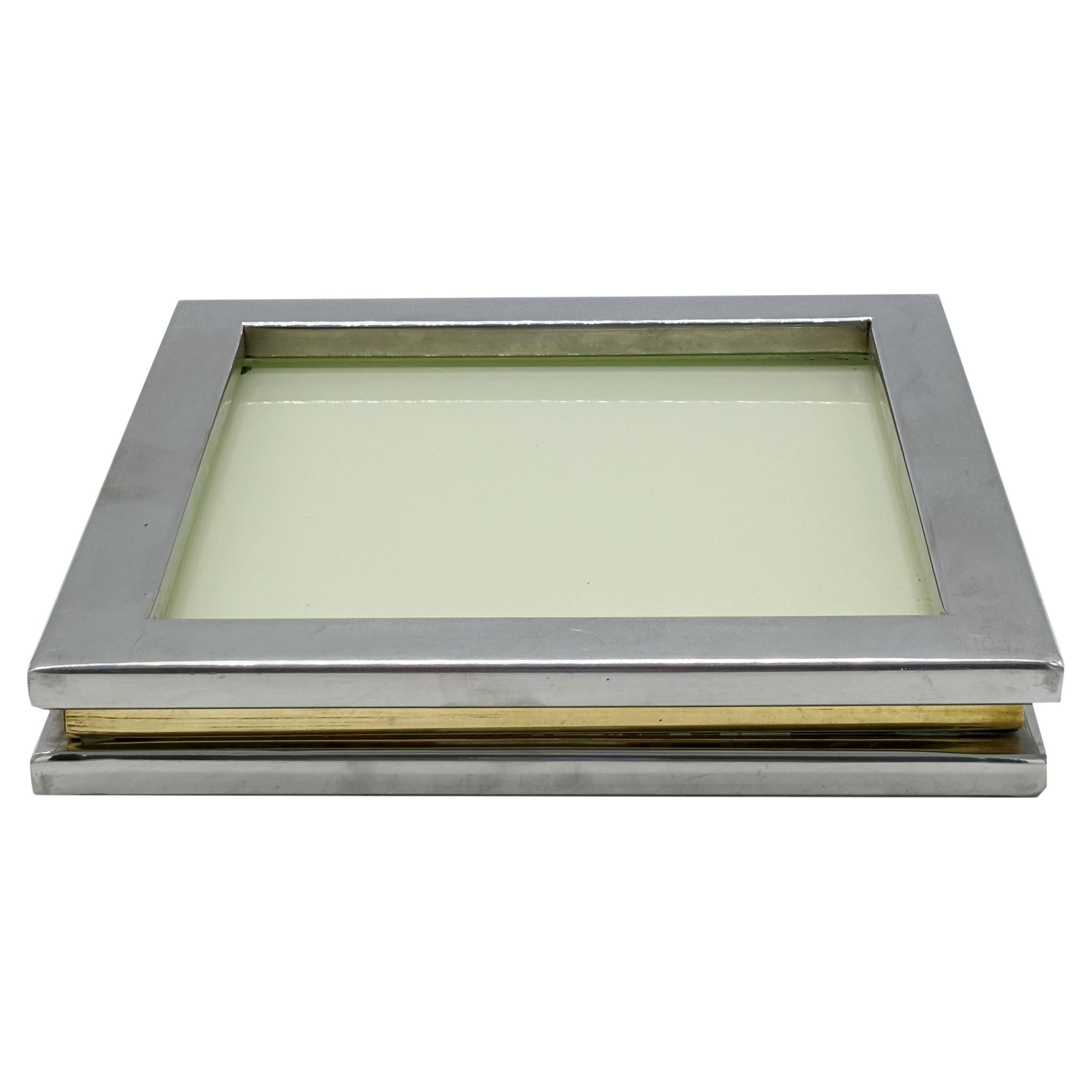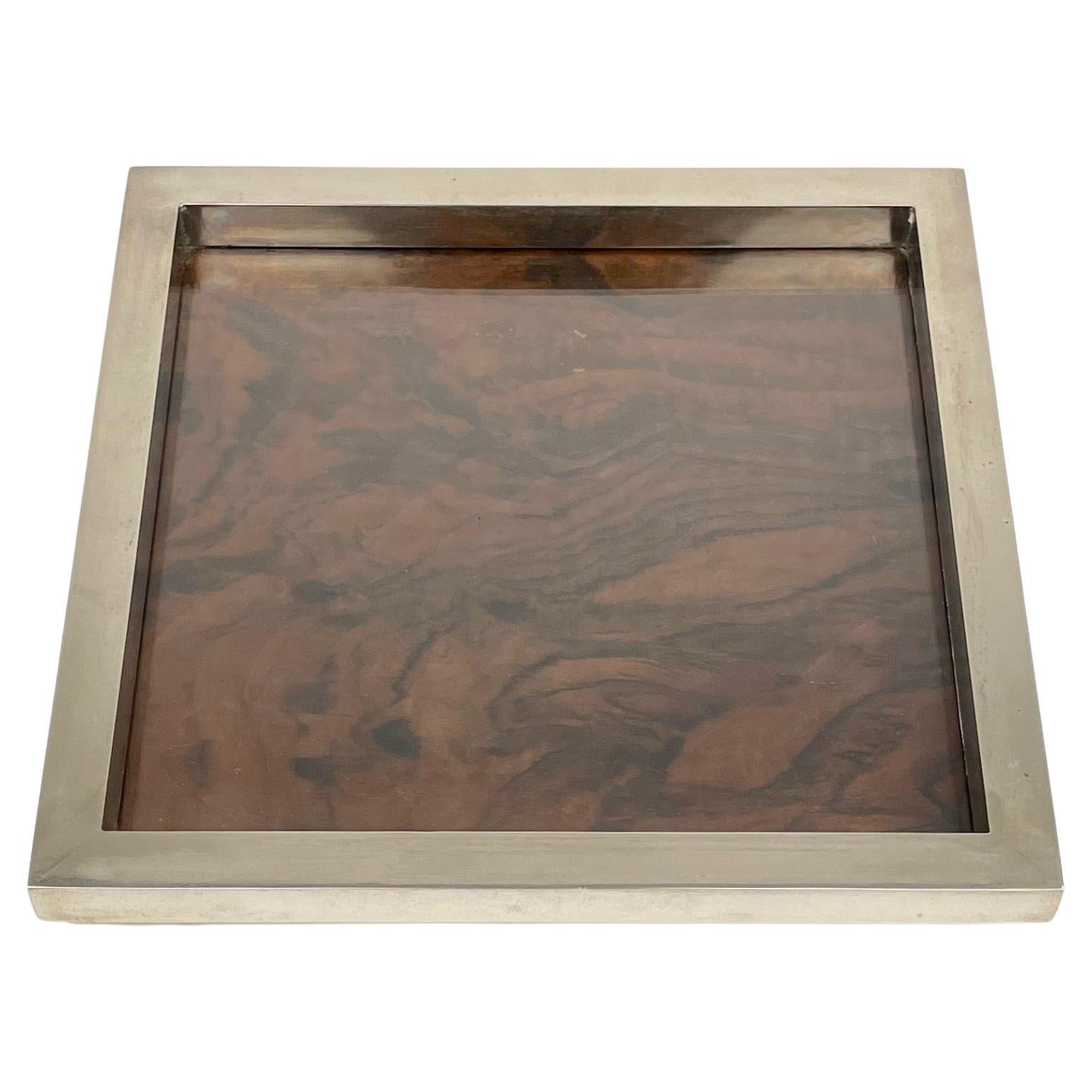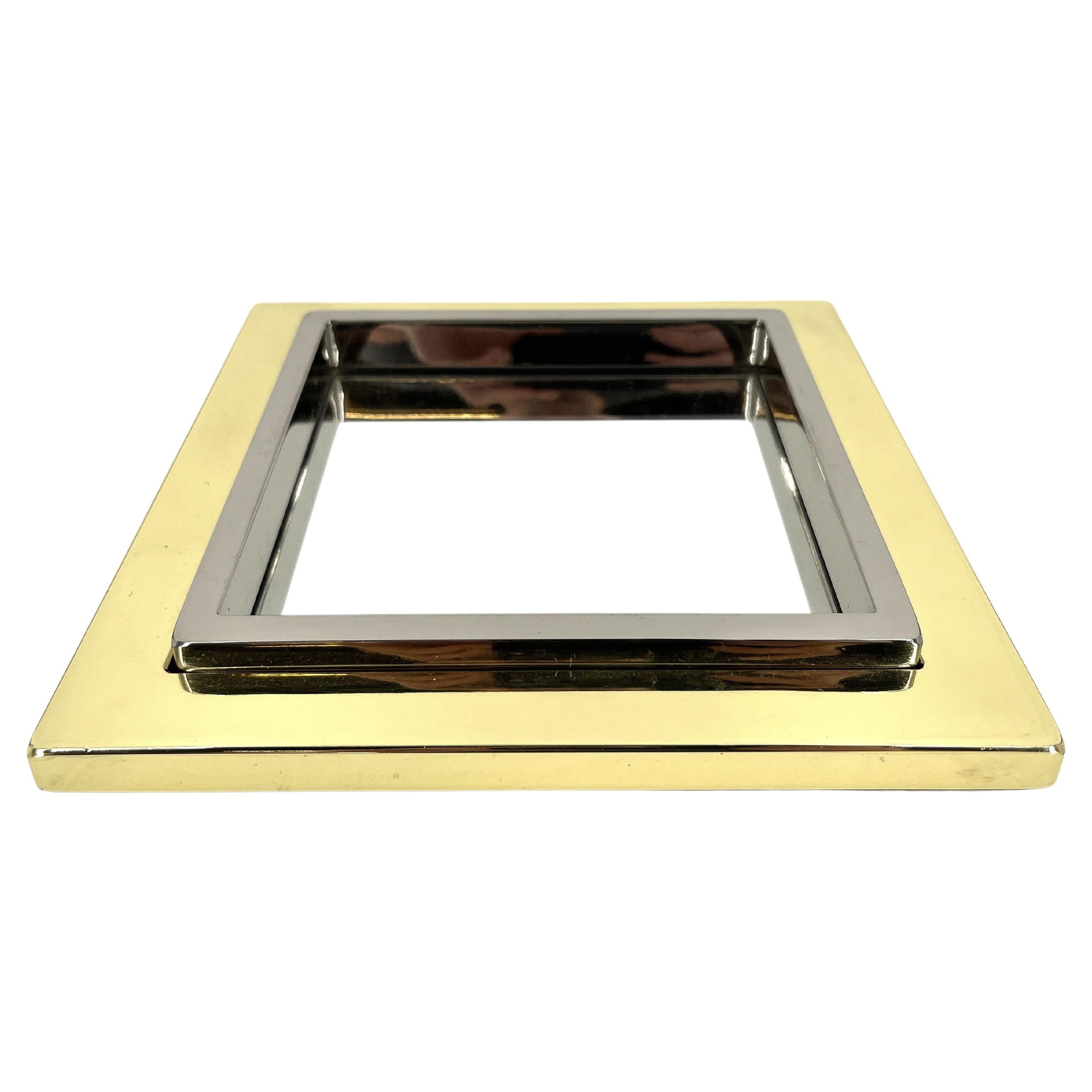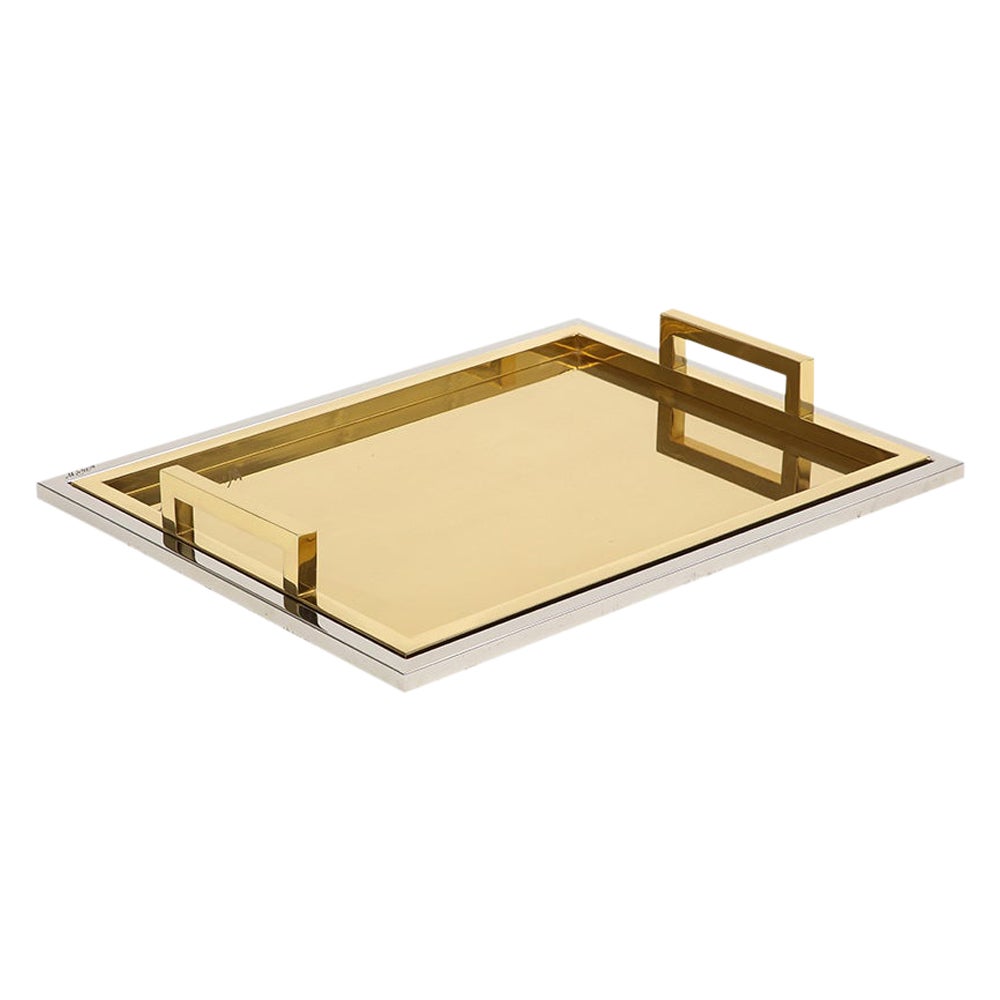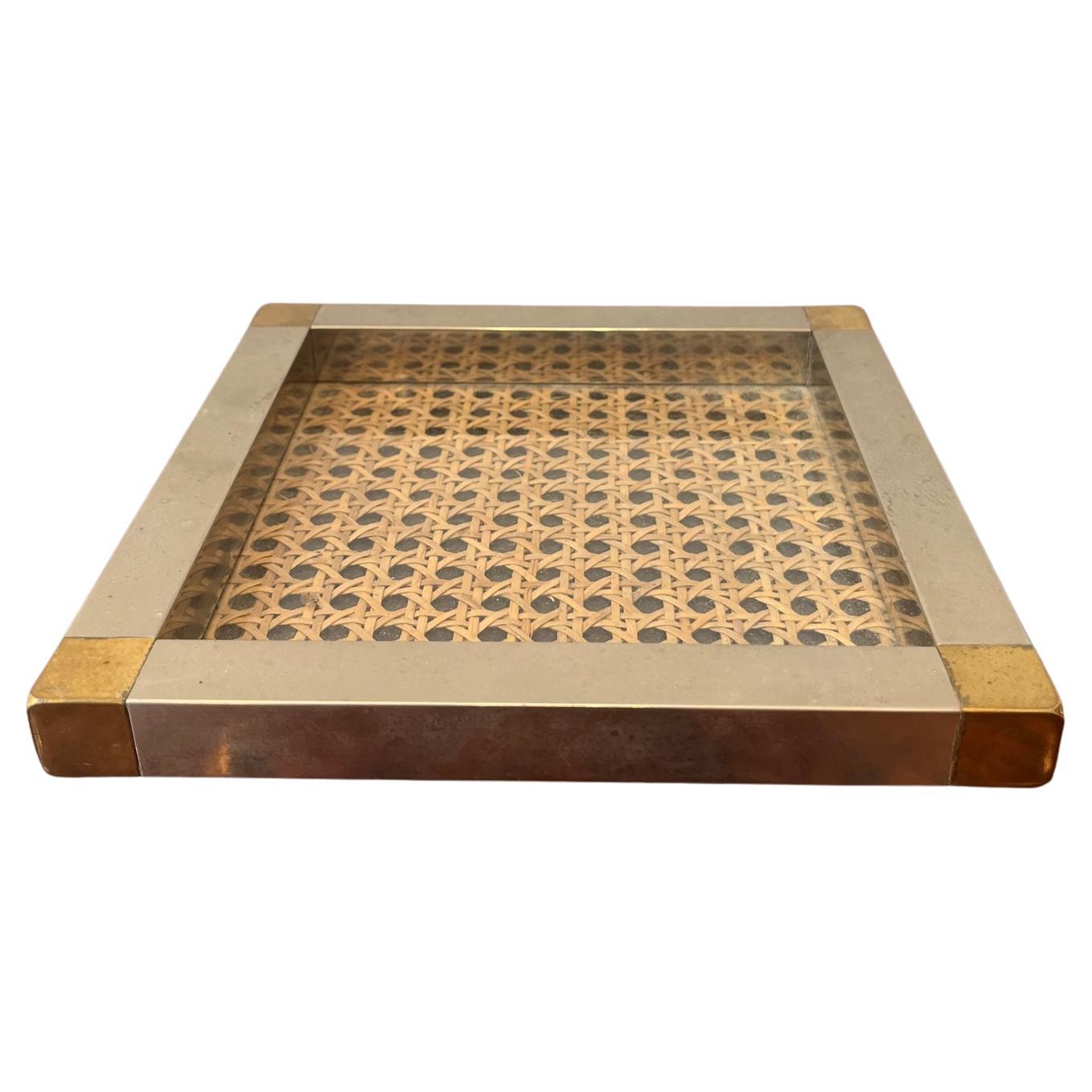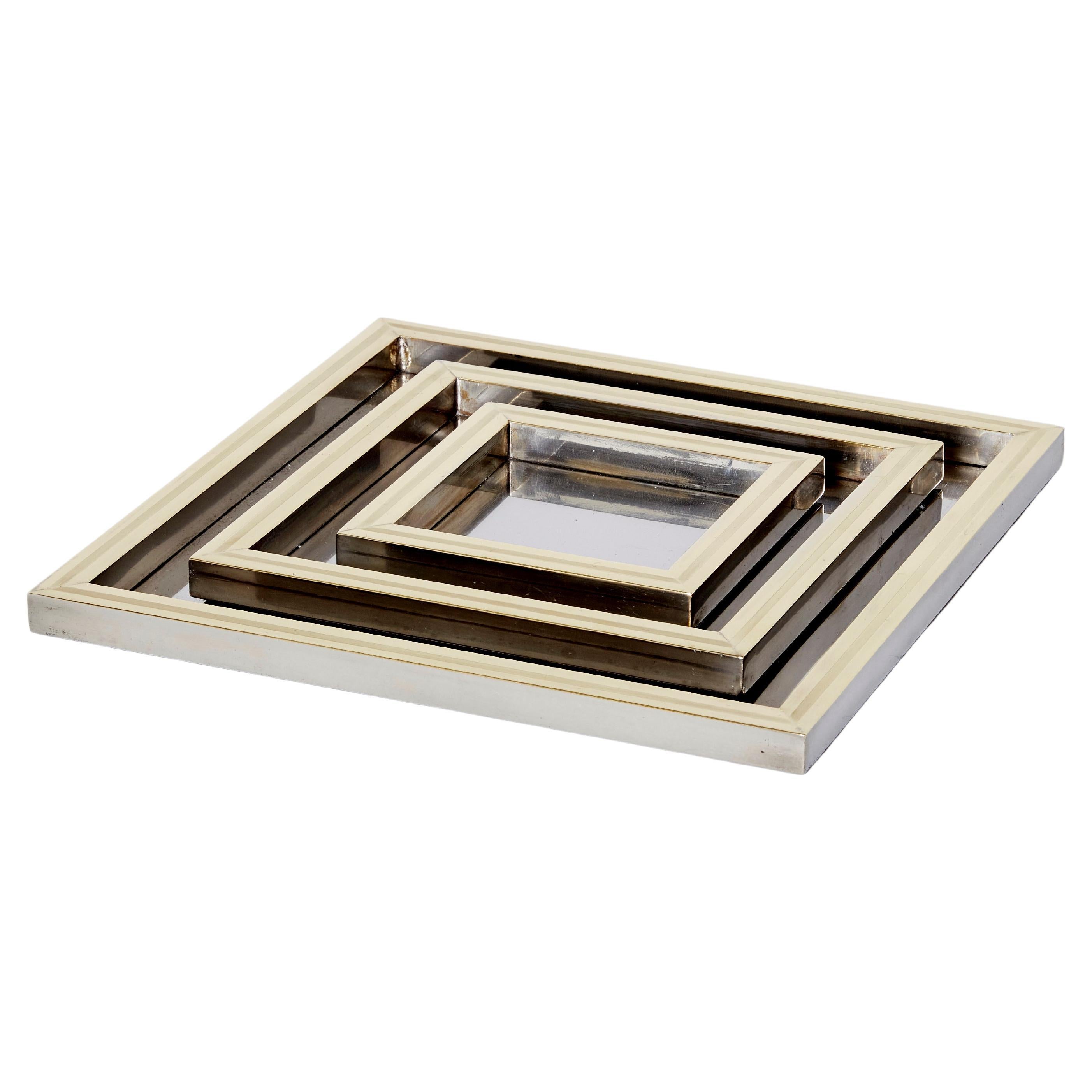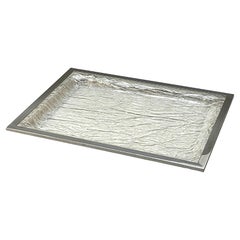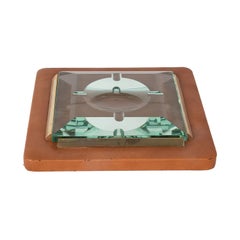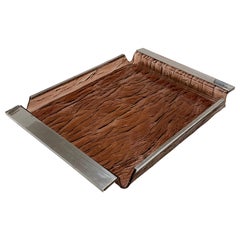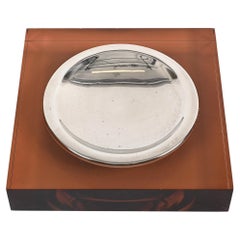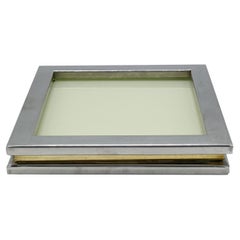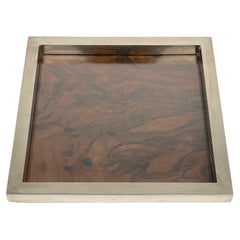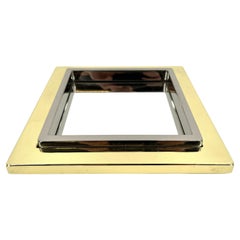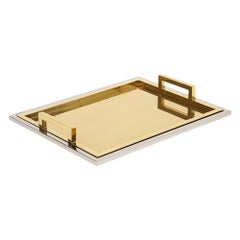Items Similar to Midcentury Willy Rizzo Chrome and Brass Vide-Poche, Italy, 1970s
Want more images or videos?
Request additional images or videos from the seller
1 of 15
Midcentury Willy Rizzo Chrome and Brass Vide-Poche, Italy, 1970s
$541.64
£394.04
€450
CA$739.18
A$823.15
CHF 428.40
MX$10,149.32
NOK 5,456.04
SEK 5,128.15
DKK 3,424.71
Shipping
Retrieving quote...The 1stDibs Promise:
Authenticity Guarantee,
Money-Back Guarantee,
24-Hour Cancellation
About the Item
Gorgeous Vide-Poche fully made in chrome and brass. This fantastic piece was designed in Italy during the 1970s and is attributed to a Willy Rizzo production.
This lovely decorative piece features a sqaure structure made in chromed metal with a central frame in brass. The contrast between the two materials is incredibly elegant.
This wonderful pocket emptier will allow you to smarten and enhance a midcentury studio or a modern living room.
Measures in cm:
Width - 20
Depth - 20
Height - 1,7
Born in Naples, Willy Rizzo started his career as a photographer in Paris very early in the 1940s. Great photographer of personalities, fashion and great reports, he has exhibited all over the world: at Galerie Agathe Gaillard in Paris,at Galerie Bukamura in Tokyo, at Maison de la Photographie in Moscow, atMallett gallery in New York and London, at the Grimaldi Forum in Monaco, or evenat the MUBE in São Paulo.
In 1968, he moved to Rome and began his work designer for his personal needs because, according to him, "Scandinavian furniture was neither comfortable enough nor luxurious enough. " When asked, he created his workshops in 1970 and launched its points of sale worldwide." Imagination and strong modern style" are the words that define his style. Today his Elliptical marble table is exhibited at MoMA in New York.
Willy Rizzo married Dominique Rizzo in 1979. They have three children, Willy Jr, Camilla and Gloria. In 2009, they opened the Willy Rizzo Design and Photography Studio at 12 rue de Verneuil in Paris 7e. Willy Rizzo died in 2013 but his Studio continued to support his work through exhibitions and numerous projects.
"Imagination and strong modern style, which blends very well with any other environment" define the Italian style of 1965-1980 which Willy Rizzo claims. As the designer puts it so well, it all started in a hair salon, located in Piazza di Spagna in Rome, at the end of 1966. While his wife Elsa is getting her hair done, they both discuss their installation in Italy, where their respective careers take them so often. Willy likes this area, he asks the hairdresser if there is a real estate agency nearby. "Sure, just around the corner but you will need a miracle to find an apartment."
And the miracle happened in the form of a second floor occupied by a shirt manufacturer overlooking the Piazza di Spagna. It was a very abandoned one-room commercial space, with no water supply and practically uninhabitable. He immediately signs a rental contract for six months and returns triumphantly to the hairdressing salon, all in 45 minutes.
With a group of local artisans, Willy turns this room into an apartment. He wants brown and gold walls, a silver-colored kitchen, black floors and ceilings. Then he designs furniture: sofas, coffee tables, consoles, hi-fi furniture and everything in between. The result is very chic. Willy Rizzo never intended to become a furniture designer, just his friends saw what he had done in his apartment and fell in love with his furniture. And since he had many friends in fashion, film, orders poured in. One of his first clients was Ghighi Cassini, a social columnist for the American Hearst newspaper who invented the "Jet Set" formula to describe the universe and lifestyle that Fellini immortalized in Dolce Vita. Cassini wanted a modern apartment in a classic Palazzo. Willy Rizzo has always loved beautiful things, beautiful antiques, he knew how to create contemporary furniture that integrated perfectly with the old. This order has appealed to others from across the Jet Set and high-net-worthy Italian society.
Salvador Dali ordered several pieces for him, as well as Brigitte Bardot for the interior of the Madrague in Saint-Tropez. He furnished apartments for aristocrats in Palazzo Borghese and Palazzo Ruspoli. The Rizzo style marked an era. Considered the designer of Dolce Vita, he also embodied him. The demand was such that in 1968, he decided to set up his own company. He installed his establishments outside Rome, in Tivoli where his team increased from 8 employees to 150. In the following years, he created more than 30 pieces of furniture, steel tables with travertine top, bronze table lamps, all handmade. His furniture is contemporary in style and always based on natural and noble materials such as wood, marble, stainless steel, brass, and wild boar. He opened a Willy Rizzo boutique on rue du Faubourg Saint-Honoré, then several in France and in Europe, as well as points of sale in New York, Miami and Los Angeles. His creations are published in numerous magazines.
In 1978, Willy sold and returned to his first love, the photo. "I have never tried to become a businessman and I am starting to get bored. I miss my bohemian life as a photographer”, he said. During these 10 years, Rizzo, a great admirer of the sophistication of Mies van der Rohe, Le Corbusier and Ruhlmann, has developed a style that is very easily recognizable today. These pieces have simple lines with well-marked geometric shapes in carefully chosen materials, inlaid in chrome and brass. He has always remained faithful to the traditional use of materials specific to artisans, avoiding entering the mass production system and the plastic that was in tune with the times. The style was first defined by its customers and the interiors to be decorated. Comfort, solidity and practicality are also important elements. As we could say that his photos are beautiful because they have a rare simplicity, we can say that his furniture works perfectly in contemporary decor because they have an elegant simplicity and a reason for being. The originality of his furniture comes from his independence as a designer who has never copied or collaborated, which explains this striking and very different style.
- Attributed to:Willy Rizzo (Designer)
- Dimensions:Height: 0.67 in (1.7 cm)Width: 7.88 in (20 cm)Depth: 7.88 in (20 cm)
- Style:Mid-Century Modern (Of the Period)
- Materials and Techniques:
- Place of Origin:
- Period:
- Date of Manufacture:1970s
- Condition:Wear consistent with age and use.
- Seller Location:Roma, IT
- Reference Number:1stDibs: LU3067334163302
About the Seller
5.0
Platinum Seller
Premium sellers with a 4.7+ rating and 24-hour response times
Established in 1990
1stDibs seller since 2017
1,690 sales on 1stDibs
Typical response time: 1 hour
- ShippingRetrieving quote...Shipping from: Roma, Italy
- Return Policy
Authenticity Guarantee
In the unlikely event there’s an issue with an item’s authenticity, contact us within 1 year for a full refund. DetailsMoney-Back Guarantee
If your item is not as described, is damaged in transit, or does not arrive, contact us within 7 days for a full refund. Details24-Hour Cancellation
You have a 24-hour grace period in which to reconsider your purchase, with no questions asked.Vetted Professional Sellers
Our world-class sellers must adhere to strict standards for service and quality, maintaining the integrity of our listings.Price-Match Guarantee
If you find that a seller listed the same item for a lower price elsewhere, we’ll match it.Trusted Global Delivery
Our best-in-class carrier network provides specialized shipping options worldwide, including custom delivery.More From This Seller
View AllMidcentury Crystal Lucite and Chrome Italian Tray in Willy Rizzo Style, 1970s
By Willy Rizzo, Christian Dior
Located in Roma, IT
Amazing midcentury crystal lucite and chrome tray. This fantastic piece was designed in Italy during the 1970s and it is in the style of Willy Rizzo.
This centrepiece is unique as t...
Category
Late 20th Century Italian Mid-Century Modern Serving Pieces
Materials
Metal, Chrome
Fontana Arte 1970s, Ashtray in Leather, Brass and Faceted Glass, Italy Art Glass
By Fontana Arte
Located in Roma, IT
Fontana Arte 1970s. Ashtray in leather, brass and faceted glass.
Category
Mid-20th Century Italian Mid-Century Modern Ashtrays
Materials
Glass
Tray Centrepiece Ice Effect Tray, Lucite Chrome Willy Rizzo Style, Italy, 1970s
By Christian Dior, Willy Rizzo
Located in Roma, IT
Centrepiece or tray effect in plexiglass with ice effect. Attributable to Willy Rizzo, Italy, 1970s.
Measure: 53 x 38 x 5 cm in height.
Category
Late 20th Century Italian Mid-Century Modern Serving Pieces
Materials
Metal, Chrome
Willy Rizzo Mid-Century Dark Amber Lucite and Chrome Italian Ashtray, 1970s
By Willy Rizzo
Located in Roma, IT
Wonderful dark amber lucite and chromed metal ashtray. This fantastic item was designed in Italy during the 1970s following the style of Willy Rizzo.
This ashtray is fantastic bec...
Category
Late 20th Century Italian Mid-Century Modern Centerpieces
Materials
Metal, Chrome
Midcentury Cubic Chromed Steel, Wood and Glass Dry Bar, Italy 1970s
By Willy Rizzo
Located in Roma, IT
Unique midcentury cubic dry bar in lacquered ash wood, mirrored steel and glass dry bar with hidden wheels. This gorgeous Willy Rizzo style dry bar was produced in Italy during the 1970s.
The wheeled bar cart's four sides are in mirrored chromed steel, while the top is in dark smoked glass. It moves thanks to four hidden wheels, and the structure is veneered black lacquered oak.
A design masterpiece that will become a cult furniture element in a midcentury bar or living room.
Italian designer and photographer Willy Rizzo (1928-2013) first came to prominence in the 1960s as both a chronicler of and participant in La Dolce Vita, the glamorous, jet set lifestyle enjoyed by many international celebrities and socialites in the postwar era. While photography was Rizzo's first love, in the 1970s he developed a passion for interiors and launched a second successful career as a luxury furniture designer.
Rizzo was born in Naples in 1928 but moved to France early. After expressing an interest in photography at the age of 12, Rizzo's mother gifted him an Agfa Box camera; soon he was shooting portraits of his classmates at Paris's Istituto Statale Italiano Leonardo Da Vinci.
In the 1940s, Rizzo began his career as a photojournalist, working for several French publications, including Ciné Mondial, Point de Vue, and Image du Monde. In the aftermath of the Second World War, Rizzo notably covered the Nuremberg Trials and travelled to Tunisia for Point de Vue to photograph the conflict in North Africa, later published in Life Magazine. As his reputation grew, he was hired by France Dimanche to take portraits of the rich and famous at flashy events like the Cannes Film Festival. Rizzo's charm won the trust of royalty, dignitaries, and movie stars, allowing him to capture these public figures in unusually candid moments.
Hoping to advance his career further, Rizzo travelled to New York with Black Star Agency in 1947 to photograph American starlets. When he returned to Paris two years later, he was invited to join Jean Prouvost’s newest publication in colour, Paris Match, as head photographer—a position that he held for 20 years and, along the way, sparked a new culture of celebrity photographers who were as intriguing and fashionable as their subjects.
In 1959, he became the artistic director of Marie Claire and collaborated with other fashion magazines, such as Vogue.
Throughout his career, Rizzo photographed dozens of stars, including Brigitte Bardot, Maria Callas, Salvador Dalí, Marlene Dietrich, Jane Fonda, Gene Kelly, and Gregory Peck, as well as striking up close friendships with famous personalities like Coco Chanel, Christian Dior, and Jack Nicholson. In 1962, Rizzo famously captured some of the last moments of Marilyn Monroe’s life on film before tragically committing suicide a few weeks later.
In 1968, Rizzo married Italian actress Elsa Martinelli, and the pair relocated to Rome. It was here that Rizzo began his work in furniture design, starting with his newly-leased, run-down Roman apartment. Just for personal use (at first), Rizzo created a series one-of-a-kind pieces inspired by modernist icons, such as Mies van der Rohe and Le Corbusier. But as his glitterati friends—Rodolfo Parisi, Gigli Rizzi, Franco Rapetti, Salvador Dalí, Brigitte Bardot, and the like—became admirers of his work, Rizzo was flooded with design commissions.
Rizzo went on to furnish apartments for Italian aristocracy in the Palazzo Borghese and Palazzo Ruspoli that same year and quickly earned an international reputation as a designer to the rich and famous. In response to ever-growing demand, he launched his own Tivoli-based company dedicated to contemporary furniture design handmade in lux materials such as wood, marble, stainless steel, brass, and wild boar. Over time, his team of eight grew to 150, and he was able to open shops in France and throughout Europe, as well as in New York, Miami, and Los Angeles.
With an emphasis on clean lines and geometric forms, Rizzo's tables, chairs, and accessories combined contemporary shapes with traditional materials—in contrast to many of his contemporaries, like Ettore Sottsass and Vico Magistretti, who were popularizing plastic, foam, and other synthetics in furniture production. Rizzo's most successful designs are many low, box-like tables in granite, metal, glass, or burled wood, often embellished with brass or chrome accents or built-in liquor cabinets or trays. Two examples of his most celebrated designs include the Alveo Coffee Table (1970s) for Mario Sabot and the circular Yin Yang Coffee Table...
Category
Vintage 1970s Italian Mid-Century Modern Barware
Materials
Steel, Metal, Chrome
Midcentury Ice Effect Lucite and Chrome Italian Tray, Willy Rizzo Style, 1970s
By Christian Dior, Willy Rizzo
Located in Roma, IT
Stunning midcentury decorative tray in ice-effect clear lucite and chrome. This elegant tray was made in Italy during the 1970s and it is attributed to Willy Rizzo.
This centrepiece...
Category
Late 20th Century Italian Mid-Century Modern Serving Pieces
Materials
Metal, Chrome
You May Also Like
Willy Rizzo Attrib. Chrome, Brass and Glass Square Pocket Emptier , Italy 1970s
By Willy Rizzo
Located in Naples, IT
A beautiful tidy tray made entirely of chrome and brass. designed in Italy in the 1970s and attributed to a Willy Rizzo production.
This lovely decorative object features a square ch...
Category
Vintage 1970s Italian Mid-Century Modern Decorative Dishes and Vide-Poche
Materials
Brass, Chrome
Chrome, Wood and Glass Squared Pocket Emptier Centerpiece, Italy, 1970s
By Christian Dior
Located in Rome, IT
Wonderful mid-century squared chrome glass and walnut feather wood pocket emptier. This fantastic piece was designed in the style of Christian Dior Style during the 1970s. The combin...
Category
Vintage 1970s Italian Mid-Century Modern Centerpieces
Materials
Metal, Chrome
Vintage brass and chrome tray, vide poche, 1970s - Italy
Located in Leuven, Vlaams Gewest
Small brass and chrome tray or vide poche.
Decorative piece
1970s - italy
Dimensions:
Height: 5cm
Width x depth: 23cm
Ref.: 25052202
Category
Vintage 1970s Italian Hollywood Regency Decorative Dishes and Vide-Poche
Materials
Brass, Chrome
Willy Rizzo Drink Trays, Brass, Polished Stainless Steel, Signed
By Willy Rizzo
Located in New York, NY
Willy Rizzo drink trays, brass, polished stainless steel, signed. Great quality large scale handled trays in brass and polished stainless steel, perfect for entertaining. Willy Rizzo...
Category
2010s Italian Modern Serving Pieces
Materials
Brass, Stainless Steel
Vintage Cane, Chrome & Brass Ashtray, Italy ca. 1970s
By Willy Rizzo
Located in Geneva, CH
Vintage square cane, brass, chrome and glass ashtray in the manner of Willy Rizzo, Romeo Rega or Gabriella Crespi...
Made in Italy ca. 1970s.
20 x 20 x 2.5 cm
Category
Vintage 1970s Italian Ashtrays
Materials
Brass, Chrome
Willy Rizzo Nesting Trays Serving Pieces in Steel and Brass 1970s
By Willy Rizzo
Located in Paris, IDF
Beautiful Willy Rizzo set of three nesting trays in polished stainless steel and brass, signed, from the 1970s. The graduated measurements are 5.15 inches then 7.9 inches and 10.65 i...
Category
Vintage 1970s Italian Mid-Century Modern Serving Pieces
Materials
Brass, Steel
